This won’t surprise anyone with a pulse, but women massively contribute to our society in a variety of ways. Despite this, females of all ages continue to face gender bias and inequality in their personal and professional lives. The fields of science, technology, engineering, and math (STEM) are no exception. Here, gender biases manifest in a number of ways including peer review, competency evaluation,research funding, field-specific stereotypes, the “Mom Penalty,” and sexual harassment – to name just a sampling.
Fortunately, the full story is not all doom and gloom. Generations of STEM trailblazers (and their allies) are redefining what a scientist looks like and what women can achieve.
In recognition of this as well as Women’s History Month and International Women’s Day (March 8th), we asked CG Lifers to share their thoughts on women in STEM that have personally inspired them. Below is a collection of incredible scientists, engineers, communicators, and advocates that have made profound impacts on CG Lifers through their work and shared passion for science and its community.
Tiera Guinn Fletcher
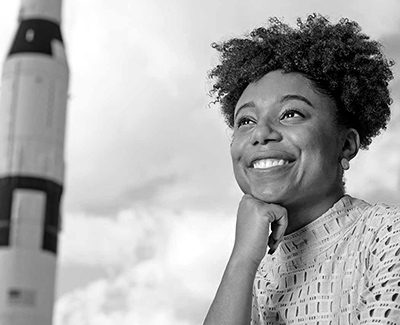
“Tiera is a 24-year old MIT graduate who finished her undergrad with a 5.0 GPA in 2017. She got her degree in aeronautics and astronautics and was hired by Boeing as a Rocket Structural Design and Analysis Engineer before she even finished school. Currently, she is working for a sector of Boeing that supports NASA to develop what would be the largest and most powerful rocket to date. As if this (and she) wasn’t cool enough, this rocket is intended to serve as a vehicle to transport humans to Mars. Interestingly, she chose this career path while she was still in middle school – and when asked about this she has encouraged younger women to follow her path and pursue their dreams despite the challenges that may come with it. In this interview with WBRC, she said, “You have to look forward to your dream and you can’t let anybody get in the way of it, no matter how tough it may be, no matter how many tears you might cry, you have to keep pushing. And you have to understand that nothing comes easy. Keeping your eyes on the prize, you can succeed.” Since Tiera is essentially the same age as I am, it’s truly inspiring to see someone from my generation play a role in STEM work that can have a significant impact on the course of humanity in the future.”
-Aulani Capuchin , Public Relations Senior Account Executive
Monica Metzler, J.D.

“My personal venture into science communication and outreach began when I met Monica Metzler and began volunteering for her nonprofit, the Illinois Science Council (ISC). The ISC is an independent organization that puts on live, entertaining scientific programming for adults in Chicago. After getting her law degree, Monica consulted for non-profits until she decided to dive head-first into running the ISC full-time. She has no formal science training, yet she has almost single-handedly built one of most recognized science outreach non-profits in the city. She has worked tirelessly to establish the ISC as the adult complement to science museums and to establish science as a cultural touchstone for Chicago on the level of arts and music. By bringing scientists, engineers, and healthcare professionals out into the public sphere to educate, excite, and inspire the city’s adults, Monica has shown the public that science is nothing to be afraid of, but rather, that it can be a source of entertainment and joy.”
- Ben Marcus, Ph.D. , Public Relations Account Supervisor
Ada Yonath, Ph.D.

“I find the career of Nobel prize winner Ada E. Yonath, Ph.D. incredibly inspiring. Working mainly out of Israel since the 1970’s, her skill in X-ray crystallography gave us the first 3-D structure of the bacterial ribosome. She took on a seemingly impossible task. To do X-ray crystallography, you have to crystallize your protein of interest by trial and error. If your protein is big, this can get fiendishly difficult. For Ada’s work, forget big – ribosomes are gigantic. Next to other proteins in the cell, the ribosome is like 30 elephants standing on top of each other to form a pyramid. Because of this, and because others had failed before her, people told Ada that crystallizing the ribosome was impossible. Nonetheless, after 25,000 attempts, she and her labfinally succeeded. Ribosomes are the protein complexes that produce all of the protein needed for a cell to function, but did you know that many antibiotics work by blocking ribosomal function? The ribosomal structures that Ada and her lab solved have shown us not only how cells make proteins, but also how numerous antibiotics work, and how bacteria develop antibiotic resistance.”
-Kate Proudfoot, Ph.D. , Public Relations Account Executive
Greta Thunberg

“Environmental activist Greta Thunberg inspires me with her appeals to public leaders and the masses to act in response to climate change. Her work turned a point-of-view into a movement and always reminds me that everyone has a voice. We simply have to use it and always speak truth to power. Despite her age, does she qualify as a woman in STEM? Absolutely! At the center of her efforts is constant, unwavering support for science and the climate scientists working to save us all. She doggedly fights to remind people to use science as a guide for solving the problems we face.”
-Erik Clausen , Managing Partner
Katie Bouman, Ph.D.
“Katie Bouman is a 30-year-old computer scientist who you may know from this viral picture:
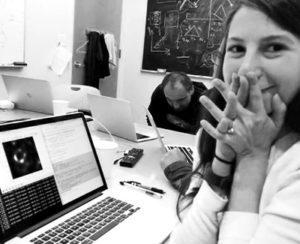
That’s Katie seeing the first image of a black hole ever captured, produced by an algorithm known as Continuous High-resolution Image Reconstruction using Patch priors (CHIRP) that she led development on. Not only did her work reveal undiscovered parts of our universe, she also demonstrated incredible grace while emphasizing the collaborative efforts of the scientific community and her team (200+ fellow MIT computer science and astrophysicists), which together, made the imaging of a black hole possible. In doing so, she showed the importance of teamwork as a vital element within scientific discovery. It also stood in stark contrast to an online backlash desperate to give credit for the breakthrough to other men, another reminder of the challenges that women like Katie are consistently working to overcome.”
-Jeremiah Worth , VP of Digital Marketing
Rachel Diner, Ph.D.
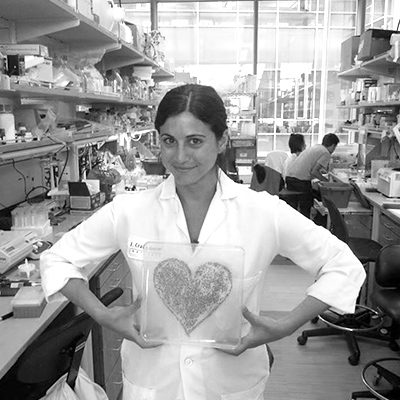
“About a year ago, my wife Rachel Diner completed her Ph.D. in Oceanography at UCSD’s Scripps Institution of Oceanography. For Rachel, this monumental journey was epically non-linear. After college, Rachel got a degree in environmental law (NBD, right?) and ran her own practice for a year. Ultimately, she decided that law wasn’t for her and decided to pursue science instead, with the goal of becoming an academic professor. Making this type of career change into a challenging field with uncertain job prospects was a big leap, but Rachel’s passion and grit propelled her first through a M.S. in Marine Biology, then through her Ph.D. Now she’s continuing her research as a postdoctoral researcher, using genomics and metagenomics to study coastal microbial ecosystems at in the Gilbert lab at UCSD.
As someone who has been through a Ph.D. program, watching Rachel pursue research has been beyond inspiring and impressive. She was able to achieve her professional goals while also raising our two wonderful children, Wylie and Ella, running a blog (check out Mother of Microbes!), and volunteering to help educate children in public schools about science with the League of Extraordinary Scientists and Engineers. Pursuing a career in science is hard, but as Rachel says, “…that just means it’s worth doing.”
-Elie Diner, Ph.D. , Senior Content Specialist
Women in Bio (WIB)
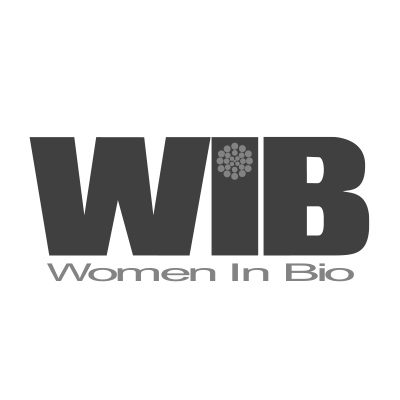
“There is strength in numbers for almost every situation in life. That philosophy holds true when it comes to the impact women in STEM can have when they stand together towards a common goal. One organization CG Life is proud to sponsor for their commitment to promote careers, leadership, and entrepreneurship of women in the life sciences isWomen In Bio (WIB). From engaging with young women still in high school to bolstering the female presence in the C-suite and boardroom, this national organization is made up of countless volunteers who have developed programs aimed at promoting diversity and inclusion for women at every stage of their career. Our hats go off to each woman who has given their time, skills, and voice to support each other through this organization.”
-Peggy Vorwald, Ph.D. , Public Relations Account Supervisor
Melinda Gates, MBA
“I am always inspired by individuals in a fortunate position who use their platform to make a difference in the world. Melinda Gates is one of those people, and the work she does through the Bill and Melinda Gates Foundation is making a difference around the world.
Her belief in the importance of women’s health as a means to change the world is clear in her achievements, including increased access to vaccines, contraception, and family planning tools for women in developing nations.

A veteran of the tech industry herself, Melinda has dedicated her efforts to support, create, and ensure career opportunities in STEM for future female generations. Her commitment is reflected in the $1B she invested in her company, Pivotal Ventures, which focuses on transforming social progress in the US. An inspiring program developed through this initiative called Gender Equality in Tech (GET) Cities, creates a collaborative approach between businesses and STEM students, providing opportunities to those whose socio-economic status might have previously impeded their participation.
Approaching her work with honesty, facts, and passion, Melinda Gates is truly committed to making a difference in women’s lives – from their health to their careers.”
-Pamela Arias ,**** Account Manager
Mia L. Huang, Ph.D.
“Throughout the course of my personal and professional life, I have been extremely lucky to benefit from the mentorship of a number of incredible women. I have worked with and for a number of incredible scholars, thinkers, and scientists undaunted by the challenges foisted on them by systemic gender inequality. Emulating their tireless pursuit, my generation of scientists (and future ones) are increasingly poised to bring a reckoning to unacceptable injustices.

In particular, I’d like to highlight my colleague and friend, Mia Huang, Ph.D., who I learned from immensely throughout the course of my Ph.D. Mia is currently an assistant professor in the Departments of Molecular Medicine and Chemistry at Scripps Research (Jupiter, FL) studying chemical biology approaches to investigate the connections between the glycome and proteome. Her lab works to better understand the glycome and proteome’s collective role in cellular development and diseases like cancer. In addition to teaching me a great deal about being a thoughtful and critical scientist, Mia was a constant sounding board and confidant for my own research and challenges. Despite me adding to her busy post-doctoral time with my thoughts and stress, Mia always was a source of strength and validation. Even more incredible was her ability to not let anything stand in the way of her drive and success. I truly appreciate the opportunity to work closely with her during those 5 years.
I should note that glycoscience has a number of women in STEM leaders that have consistently inspired me as well as a bevy of other young scientists, independent of gender. Though this is not comprehensive, I have relished the opportunity to read the work of scientists like Carolyn Bertozzi Ph.D. (who was recently featured in C&EN), Laura Keissling Ph.D., Ten Feizi Ph.D., Nissi Varki Ph.D., Pamela Stanley Ph.D., and Lara Mahal Ph.D. to name only a small handful.”
-Chris Fisher, Ph.D. , Content Specialist
Susan Stipa
“Just before first meeting Susan, I stood in a desolate lobby building waiting for her arrival. Before long, she walked in with phone to cheek and talking a million miles a minute. After seeing my face, it took one look for her to quickly end the call. Walking towards me with both arms wide open, she gave me the warmest greeting any stranger has ever given me. From that very first day, I learned that Susan was a fellow mother, full of energy, curious, and wildly empathetic.
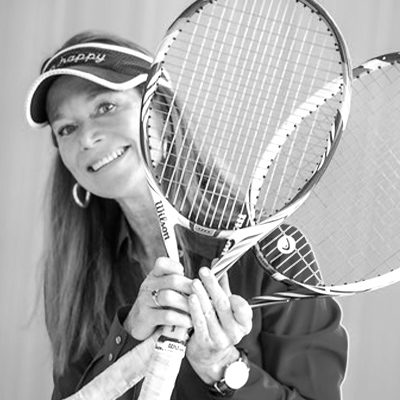
Susan has made McDay, as she puts it, to be about life. “Work is work, life is life,” Susan says. I get the sense that she relishes creating a new working world for women in STEM. This is particularly evident when she vividly tells the story of not being comfortable sharing the pregnancy of her first child with her fluoropolymer company co-workers in 1989.
I often think about what Susan faced in the 80s as a female chemical engineer. It was rare for women to work in chemical engineering back then. The ASME site says that “Although the number of female engineers today has greatly improved since the early 1980s, when only 5.8% of engineers in the U.S. were women, it’s still surprisingly low.” Recent information says women were up to ~13-14% of the engineering workforce, but Susan has explained that this percentage includes computer science engineers, which has increased more significantly than other engineering disciplines. Female chemical engineers are still only a small portion of the population, but Susan aims to change that!
As I tuck a warm hat onto the blonde locks of my now second child (a little girl), I wish for her to study science, but more importantly, I aim to teach my children curiosity and empathy. After all, I see it every day; they really do go hand-in-hand.”
-Emily Steinhauer , Account Manager
Ruby Sparks
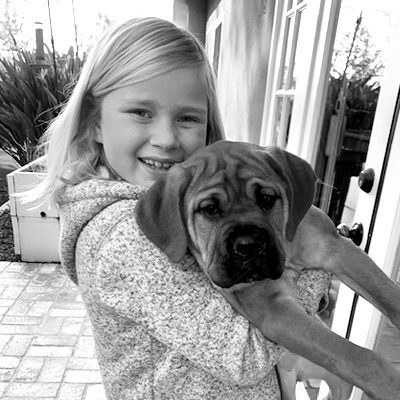
“This is Ruby Sparks. She’s 9 years old and a 3rd grader. Her two favorite subjects are Math and Science, and she consistently gets A’s in both. She loves the chemistry of making slime and is known around the neighborhood as the one who can fix anyone’s slime when they don’t know if they need more activator or something else. She’s my favorite because no one has told her ‘science is hard’ (probably because her mom and dad both work in the life sciences field even if we aren’t scientists), and she is pretty certain she can be and do anything.
Currently, women constitute 47% of the overall workforce and 28% of the science and engineering workforce. I like to think she and her friends might change that!”
-Karen Sparks , VP of Client Strategy
Who are the women in STEM inspire you? We want to hear about them! Tweet at us!
